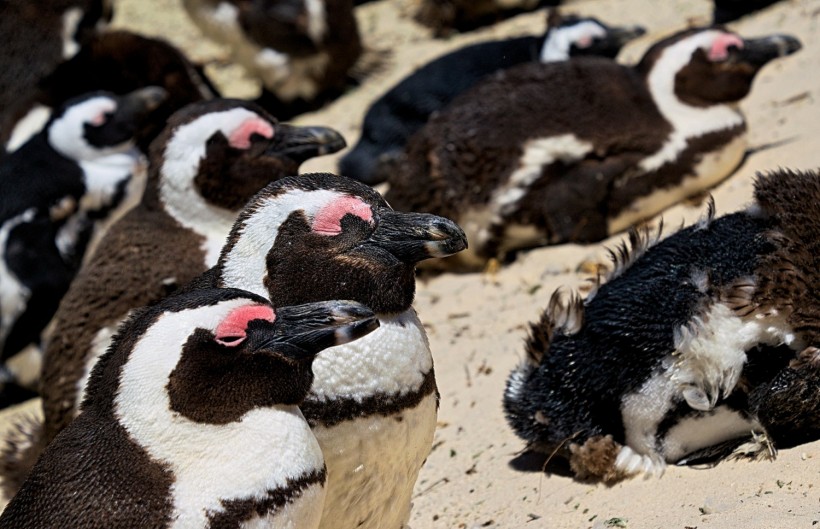African penguins are the only nesting penguins that live in the continent of Africa, ranging from Namibia's Hollamsbird Island to South Africa's Algoa Bay. These penguins thrive and breed in the region, where they are spotted with locals and tourists.
However, both anthropogenic and natural factors have endangered threatened, and almost decimated African penguin populations over the past century, a period of drastic industrial and environmental changes.
Reports earlier this week estimate that the population decline reduced 1 million breeding pairs in the early 1900s to 10,000 in 2023. The reported culprits behind this phenomenon are overfishing and climate change, which worsens the surrounding environmental conditions for both young and adult African penguins.
African Penguin Populations

African penguin populations in southern Africa are threatened by increased fishing pressure and climate crisis-driven severe weather events like floods and heat waves, according to a non-profit organization. These external threats force penguin parents to abandon their eggs to seek refuge.
Due to this ecological threat, researchers are attempting to restore the once-abundant numbers of the African penguin (Spheniscus demersus). One of these measures includes an established sanctuary for the penguins 146 miles east of Cape Town, South Africa.
Based on a 2021 and 2019 breeding census, South Africa has approximately 10,400 remaining African penguin pairs while Namibia has around 4,300 pairs, making the total global population of the species to 14,700 pairs, according to the non-profit organization SANCCOB.
SANCCOB cited a study that over the last 30 years, the number of breeding African penguins in South Africa declined by 73% from 42,500 breeding pairs in 1991 to 10,400 pairs in 2021. This shows that there is a significant decline in African penguin populations in the past three generations.
Threats to African Penguin
Evidence shows that not only overfishing and climate change are the main reasons behind the decline of African penguin populations. This is because other reported factors can kill and wreak havoc on penguin colonies across South Africa such as bird flu (avian influenza), oil spills, and extreme weather events.
However, the two threats mentioned earlier are the most evident cause of injuries or deaths among African penguins but the other human-induced and natural threats are not ruled out by scientists and conservation authorities.
According to the Convention on the Conservation of Migratory Species of Wild Animals (CMS), threats to African penguins involves several challenges caused by human activities, including over-exploitation of penguin eggs and destruction of their terrestrial habitat due to guano collection.
In addition, excessive fishing of the African penguin's prey, fishing gear entanglement, and oil pollution are also threats that the animals have been facing for several decades. CMS also reported that the ecosystem off the west coast of South Africa and Namibia is experiencing an oceanographic phenomenon, called upwelling, which pertains to the rise of seawater, magma, or other liquid.
Related Article: World's Oldest African Penguin 'ET' Dies from 'Natural Causes' at Richmond Zoo
© 2024 NatureWorldNews.com All rights reserved. Do not reproduce without permission.

![Tsunami Hazard Zones: New US Map Shows Places at Risk of Flooding and Tsunamis Amid Rising Sea Levels [NOAA]](https://1471793142.rsc.cdn77.org/data/thumbs/full/70325/280/157/50/40/tsunami-hazard-zones-new-us-map-shows-places-at-risk-of-flooding-and-tsunamis-amid-rising-sea-levels-noaa.jpg)



